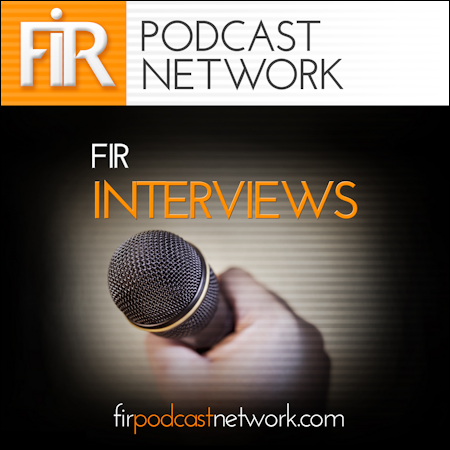A discussion topic in episode 701 of the FIR podcast, published today, looks at a question asked in the Metro newspaper last week: should British politicians take notes from Barack Obama’s campaign team?
The Metro’s excellent report looked at the key role social media played – especially Twitter – in both of the US president’s election campaigns in 2008 and 2012 in enabling direct engagement with reporters and opinion-makers as well as with voters in communities across the United States (see detailed analysis of 2012 from Pew’s Journalism. org).
The discussion that guest co-host Stephen Waddington and I had in the podcast considered key elements of Obama’s campaign as described in the Metro story by Obama’s deputy campaign manager, Jennifer O’Malley Dillon. Her conclusion:
[…] Summing up the lessons of 2008 and 2012, Ms O’Malley Dillon said: ‘If there’s anything to be learned from our campaign, it’s that we made it a priority, we believed in it from the top to the bottom, we ensured the resources were there and we allowed it to help dictate for us in some ways the type of things we were doing based on how people use these forums.
‘We weren’t trying to recreate the wheel, we were trying to be part of the dialogue and I think that’s one of the many ways we were able to be successful.’
Keeping that in mind, Wadds and I broadly concluded in our discussion that a) yes, British politicians would benefit from studying the role of social media in US election campaigning; and b) there’s little to suggest that they are or have done so – certainly at a central-government level that seems isolated from grassroots ‘social politics’ – even though the next general election in the UK is only two years away at most.
So The Guardian’s report yesterday on the role of Twitter in how Downing Street aims to secure goodwill from journalists by revealing news before its official announcement by ministers had me thinking about what looks like a chasm of a difference in how American politicians see social media channels like Twitter and how UK ones do.
There, it looks more open and inclusive. Here, it seems to be secretive, selective and controlled.
That’s a great pity if it does turn out to be how my cynical view of the political communication landscape appears. The way in which social media channels can galvanize political engagement with and by those who have the final word on who gets elected, as evidenced by the US experience, clearly is firmly understood by government communicators:
[…] “We’re getting to where people are these days,” said Anthony Simon, the head of digital communications in the prime minister’s office.
“Increasing numbers of people are on Twitter – journalists, stakeholders and professional groups – and to be part of that conversation is vital for any government department. It’s democratic because it’s open to anyone and we don’t go on it for the sake of it or over-rely on it – it’s a means to an end.”
I hope that the ‘means to an end’ becomes a great deal more honest- and authentic-looking than the current situation that The Guardian describes.
(The Guardian’s report below is published with their permission via the Guardian News Feed plugin for WordPress.)
Asked in 2009 why he didn’t use Twitter, David Cameron famously responded “too many twits might make a twat” . Four years later, Number 10 is attempting to move more rapidly into the digital future with a Twitter strategy that includes handing out “Twitter exclusives” to favoured journalists for release before they are officially announced by ministers.
In a tactic reminiscent of the BBC satire The Thick of It, Twitter is also being used to try to quash negative stories before they gain currency in a news cycle where every second counts.
“Every minute that passes the poison is spreading into the system to all sorts of roots and you need to find a way to cauterize that very, very quickly,” said a senior No 10 source.
The Twitter exclusives aim to secure goodwill from journalists who are often under pressure to break news online before rivals, but will irritate those who believe announcements should be made in parliament.
Many of Downing Street’s new media strategies were introduced by Craig Oliver, the prime minister’s communications director, who insisted on moving a Twitter monitor into the No 10 newsroom when he assumed his role in January 2011.
According to colleagues, Oliver likes to describe the social network as similar to fire: a useful tool in the right hands, but massively destructive if it is misused.
The analogy might leave some scratching their heads, but Cameron’s inner circle wants all his MPs to take Twitter seriously – even if the 2015 general election is, in internet time, light years away.
One example of using Twitter to “seal” a negative story came after the Evening Standard mistakenly broke George Osborne’s budget embargo on the social network last month. A mortified journalist promised to tweet a swift apology but Oliver ordered a pre-emptive tweet from the Tory press office account, to ensure the reporter’s promise was met.
Conservative party headquarters brief MPs on good talking points for Twitter, using them to “tweet as a muscular force” about a single topic or news item to hammer home the message. Some 418 MPs have joined the tweeting fray, according to the news wire Tweetminster, up from 176 in 2009.
“Twitter used to be seen as tool for the egocentric and verbally incontinent,” said a senior No 10 source. “But the reality is that it’s an extraordinarily useful way of getting talking points out there.”
Downing Street has not always been so fleet of foot – it took hours to respond to the online mockery prompted by Osborne’s first-class train ticket debacle last October – but Cameron’s inner circle now recognises that the case for a clear Twitter strategy is “unanswerable”.
“We’re getting to where people are these days,” said Anthony Simon, the head of digital communications in the prime minister’s office.
“Increasing numbers of people are on Twitter – journalists, stakeholders and professional groups – and to be part of that conversation is vital for any government department. It’s democratic because it’s open to anyone and we don’t go on it for the sake of it or over-rely on it – it’s a means to an end.”
The most popular tweet sent by the government was Cameron’s tribute to Baroness Thatcher, prompting 3,500 retweets. The most divisive was when No 10 tweeted every single reshuffle appointment last September, which led to a mass unfollowing from less devoted users but praise from politicos.
But the jury is out on whether the rest of Britain is as Twitter-addicted as the Westminster Village. “I think the majority of activity comes from a fairly small group and most MPs have fairly small audiences,” said Alberto Nardelli, the founder of the app Tweetminster, pointing out that 1.2m people follow MPs on the site – about the same size audience combined as Beppe Grillo, the leader of Italy’s anti-establishment Five Star Movement.
“I think we’ve gone beyond a ‘should politicians use Twitter?’ phase. It’s now how will it be used,” he added.
guardian.co.uk © Guardian News & Media Limited 2010
Published via the Guardian News Feed plugin for WordPress.













6 responses to “Number 10 hands out Twitter exclusives to favoured journalists”
Number 10 hands out Twitter exclusives to favoured journalists http://t.co/xNrow1vtu6
Number 10 hands out Twitter exclusives to favoured journalists http://t.co/JLFpIU7q0P
Number 10 hands out Twitter exclusives to favoured journalists http://t.co/uanN1lf7Fw
Hobson: Number 10 hands out Twitter exclusives to favoured journalists: A discussion topic in episode 701 of t… http://t.co/V2k8aa8aJ1
Number 10 hands out Twitter exclusives to favoured journalists http://t.co/SJYUFI86un
Number 10 hands out Twitter exclusives to favoured journalists http://t.co/kOFZyRzb26 #social #pr